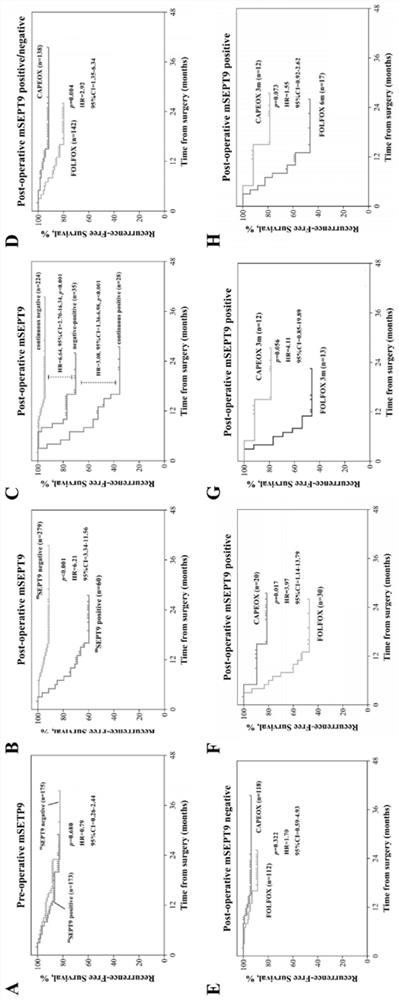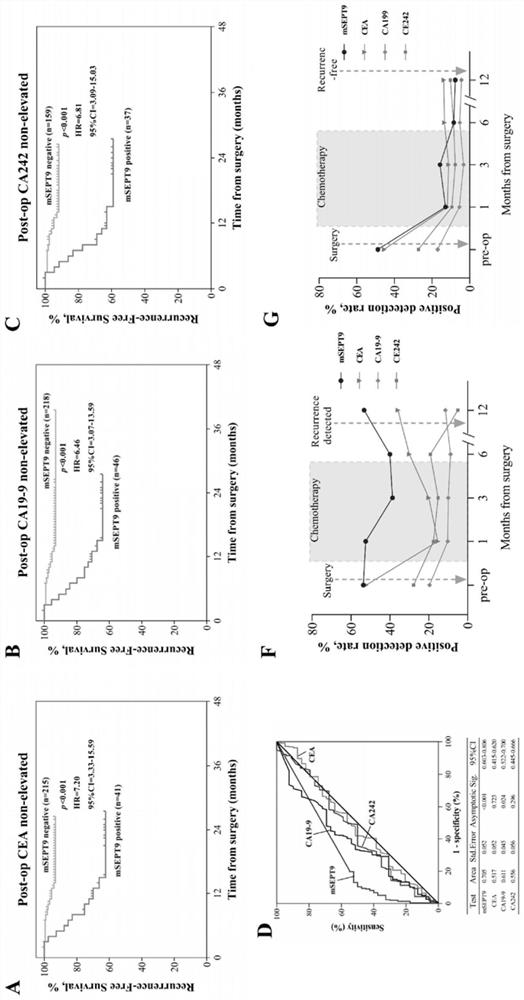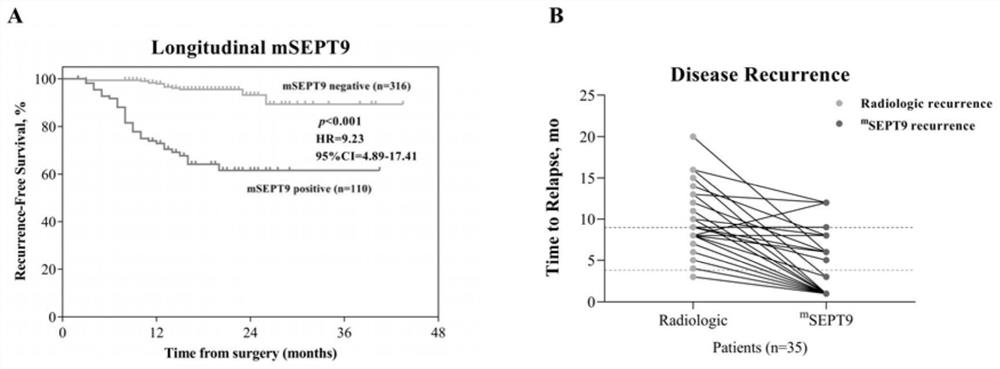Application of mSEPT9 as marker for predicting postoperative recurrence risk of colorectal cancer patient and for evaluating effectiveness of chemotherapy regimen
A colorectal cancer, effective technology, applied in the medical field, can solve the problems of limited sensitivity and specificity, and achieve the effects of excellent sensitivity and specificity, good prediction of recurrence, and prolongation of survival time.
- Summary
- Abstract
- Description
- Claims
- Application Information
AI Technical Summary
Problems solved by technology
Method used
Image
Examples
Embodiment Construction
[0021] The patent application will be further described below in conjunction with the accompanying drawings and embodiments.
[0022] This application included 426 stage II and III CRC patients who underwent radical surgery, and collected the following index detection results of patients at six time points before surgery and 1, 3, 6, 9, and 12 months after surgery: mSEPT9, CEA, For CA19-9 and CA242, patients received routine imaging examinations. At the same time, the patients were followed up. The median follow-up time was 15.8 months (range 8.1-43.4 months). The patient's survival, recurrence, treatment plan and other information were recorded. Through χ2 test, COX regression analysis, K-M survival analysis, propensity Matching analysis and other statistical methods were used to analyze the guiding role of mSEPT9 in patient recurrence monitoring and chemotherapy regimen selection.
[0023] 1. DNA Quantification of Methylated SEPT9
PUM
 Login to View More
Login to View More Abstract
Description
Claims
Application Information
 Login to View More
Login to View More - R&D
- Intellectual Property
- Life Sciences
- Materials
- Tech Scout
- Unparalleled Data Quality
- Higher Quality Content
- 60% Fewer Hallucinations
Browse by: Latest US Patents, China's latest patents, Technical Efficacy Thesaurus, Application Domain, Technology Topic, Popular Technical Reports.
© 2025 PatSnap. All rights reserved.Legal|Privacy policy|Modern Slavery Act Transparency Statement|Sitemap|About US| Contact US: help@patsnap.com



